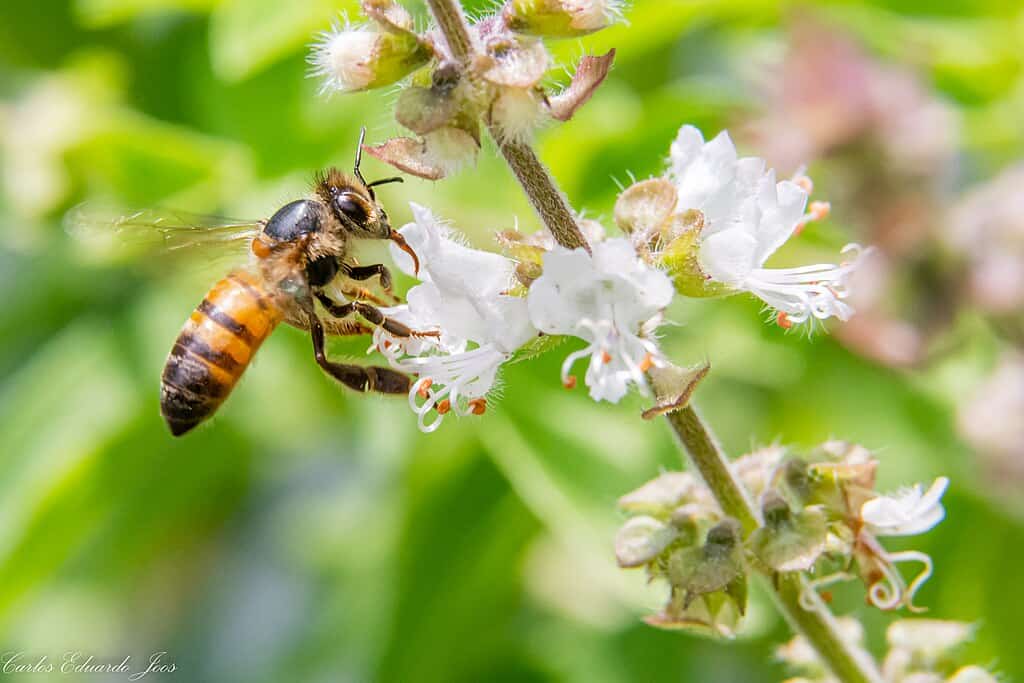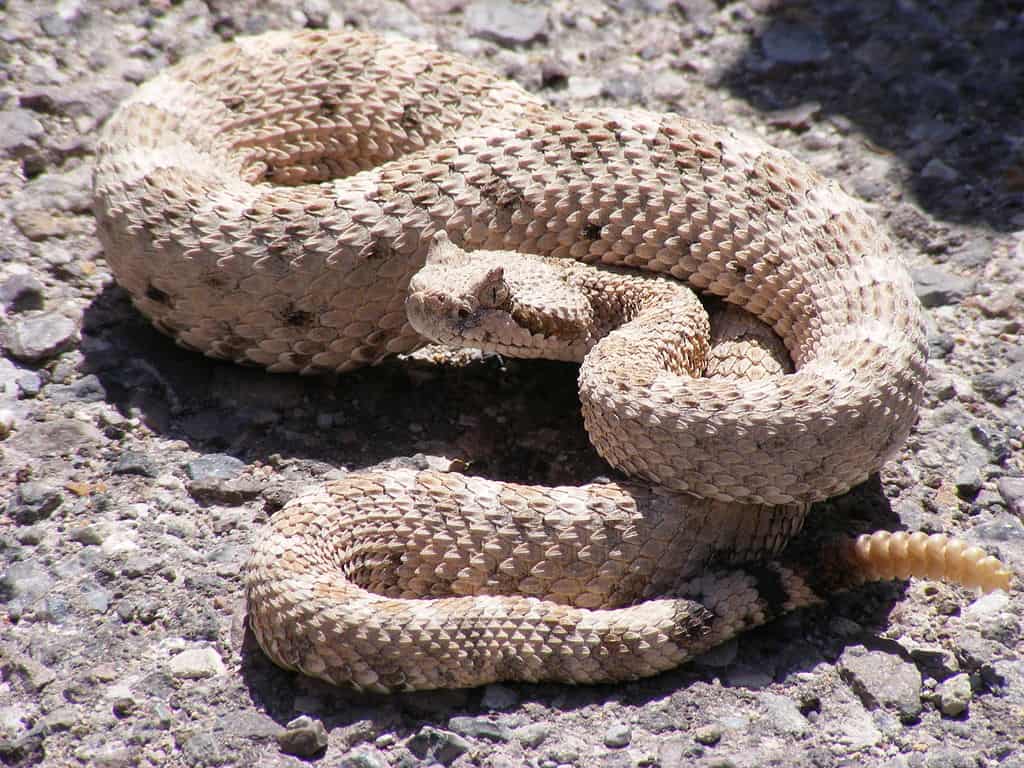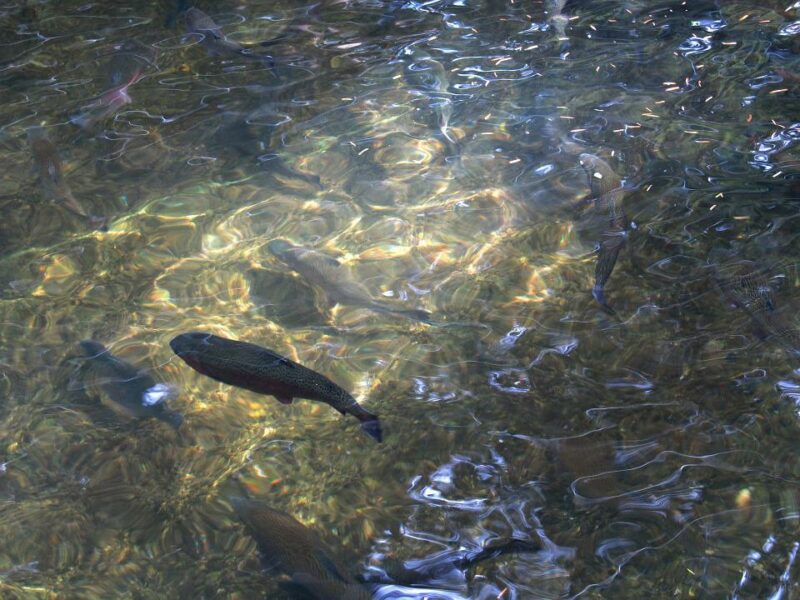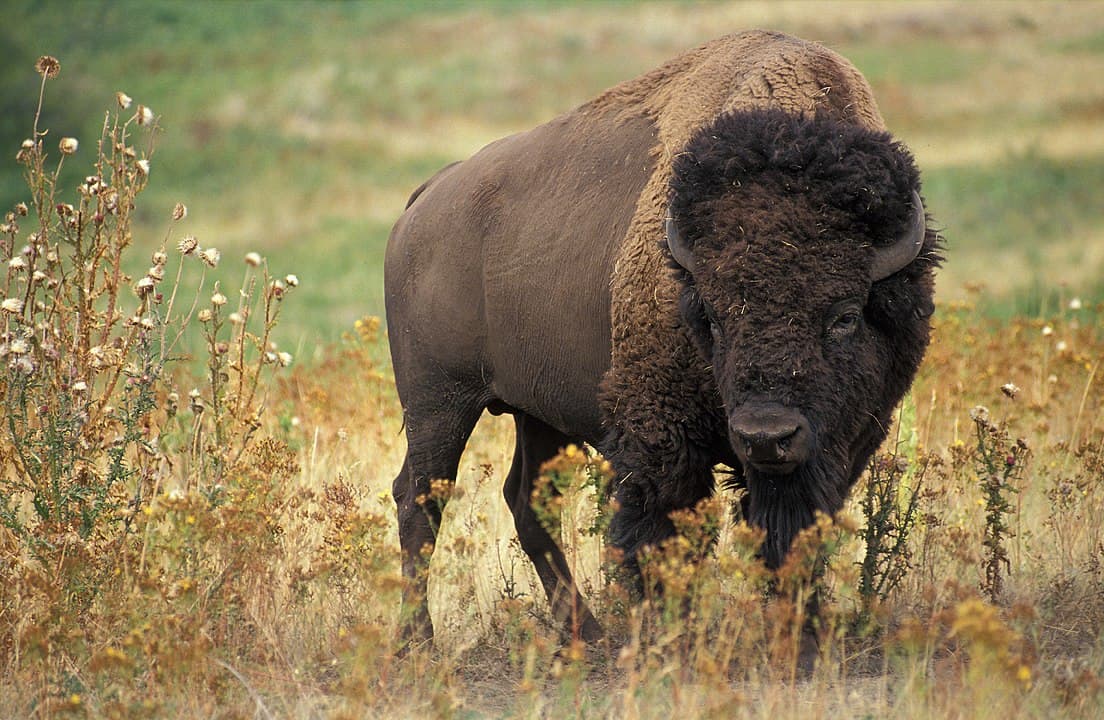Step into the Fascinating World of Animals of Arizona!
Arizona, a land of scorching deserts and rugged wilderness, teems with an extraordinary array of creatures. Beyond the awe-inspiring bears and mountain lions, this arid terrain is also inhabited by a host of smaller, yet equally formidable, creatures.
For some, some of the scariest animals are the creepy crawly ones, and Arizona has its share of those too. We are giving you a list of 10 animals or insects that are part of Arizona and will make you want to go and see them amongst the incredible landscapes of Arizona.
Have a look at some of Arizona’s most moat notable wildlife in our Animals in Arizona list:
Key Points
| Animal | Scientific Name | Habitat | Diet | Average Size | Unique Feature |
|---|---|---|---|---|---|
| Ringtail Cat | Bassariscus astutus | Desert regions, rocky areas | Omnivorous (insects, small mammals, fruits) | 12-17 inches (body) | Bushy tail with white rings |
| Gila Monster | Heloderma suspectum | Desert regions in southwestern U.S., northwestern Mexico | Carnivorous (small mammals, birds, eggs) | 20-24 inches | Venomous lizard with distinctive orange and black patterns |
| Africanized Bee | Apis mellifera scutellata | Varied | Nectar, pollen | Similar to other honey bees | Known for aggressive hive defense |
| Bark Scorpions | Centruroides spp. | Desert, arid regions | Insects, small arachnids | 2-3 inches | Glowing under UV light, highly venomous |
| Tarantulas | Various species | Deserts, grasslands, forests | Insects, small vertebrates | 2-8 inches (Body) | Large, hairy spiders with fangs |
| Rattlesnakes | Various species | Deserts, grasslands, forests | Small mammals, birds, reptiles | Varies by species | Venomous snakes with rattles |
| Cactus Wren | Campylorhynchus brunneicapillus | Arid regions, desert areas | Insects, spiders, fruit | 7-9 inches | Prominent white eyebrow stripe and distinctive call |
| Apache Trout | Oncorhynchus apache | Arizona streams and rivers | Insects, small fish | Typically less than 12 inches | Arizona’s state fish; conservation status: threatened |
| American Bison | Bison bison | Grasslands, North America | Herbivorous (grasses) | Large; males up to 2,000 pounds | Iconic symbol of North American wildlife |
| Mountain Lions | Puma concolor | Varied (mountains, deserts) | Carnivorous (deer, small mammals) | Males 130-220 pounds | Elusive and solitary big cat |
Ringtail cat
| Animal | Scientific Name | Habitat | Diet | Average Size | Unique Feature |
|---|---|---|---|---|---|
| Ringtail Cat | Bassariscus astutus | Desert regions, rocky areas | Omnivorous (insects, small mammals, fruits) | 12-17 inches (body) | Bushy tail with white rings |
The ringtail cat is the official mammal of Arizona. It’s not a cat, but it’s related to the raccoon. It is also called a bassarisk. When you see the ringtail cat, you will realize it is smaller than the average pet cat. Its tail is noticeable with black and white rings – where it gets its name from – and its tail is almost as long as its body. It’s a sleek, cunning animal with a unique appearance, like a small fox, mixed with a raccoon and a bit of the domestic house cat. They weigh around 3 pounds as adults.
You won’t see this animal often because it is more active at night. During the day, it sleeps, and at night, it hunts. It nests in a den in the rocks or logs, maybe even nearby buildings. Long ago, ranchers and miners would allow them to enter their barns to control the rats. It likes to make its home in desert areas, hard-to-get places like rock piles, canyon walls, and large boulder outcrops. It’s got solitary habits and chooses to be alone.
They are skilled at climbing and scurrying up and down rocks, boulders, trees, and cacti, and they can descend from any of them at a steep angle. Their diet mainly comprises small mammals, birds, and reptiles, and they also enjoy plants and fruit. The main predators they must watch out for are coyotes, bobcats, foxes, and large owls.
Gila Monster
| Animal | Scientific Name | Habitat | Diet | Average Size | Unique Feature |
|---|---|---|---|---|---|
| Gila Monster | Heloderma suspectum | Desert regions in southwestern U.S., northwestern Mexico | Carnivorous (small mammals, birds, eggs) | 20-24 inches | Venomous lizard with distinctive orange and black patterns |
The Gila monster is a giant lizard that is oneof the most interesting animals of Arizona. It can grow huge too. It is no small lizard that scurries off when it sees you. This one can be about two feet long, not in all cases. It has bright colors which look intriguing to get up close to see. Be careful because they are also venomous. When they bite you, a neurotoxin gets released into your body. It can cause irritation and swelling, sometimes paralysis, and even death.
They are specially designed for desert life in the arid countryside. Some state parks suit the habitat of the Gila monster. Did you know that the Gila monster stores fat in its tail? This helps it during lean times or when they have its annual hibernation. When they find prey to eat, they will immobilize it. Their prey could be birds or mammals, and other reptiles. They have large claws that help them dig out prey and underground eggs. During the day, the Gila monster will lie in shallow burrows they have dug out. They live underground most of their lives, 95% of the time.
Africanized bee

| Animal | Scientific Name | Habitat | Diet | Average Size | Unique Feature |
|---|---|---|---|---|---|
| Africanized Bee | Apis mellifera scutellata | Varied | Nectar, pollen | Similar to other honey bees | Known for aggressive hive defense |
It is not a good idea to disrupt the Africanized bee colonies that you might see in Arizona; they can turn out to be fatal – that’s what the experts say. A few people each year are killed because of sometimes unintentionally disturbing the Africanized honey bees. Don’t try and exterminate bees without calling a professional to do it for you. These bees have also become known as “killer bees,” and they become very defensive when the protection of their hives is at stake. The Africanized bee is a lot more aggressive than the average honey bee. The bees love the warmer climates, areas like southern California and Texas. Arizona is the perfect area for these bees to make their home.
They make their nests in hollowed-out tree trunks, buildings’ eaves, or cavities. Their hives or nests consist of wax produced from the worker bees’ glands. They make vertically hanging combs. These combs will have hexagonal cells with eggs, larvae, pupae pollen, and honey. The bees feed on pollen and nectar from flowering plants, making them excellent pollinators. The queen bee is produced from fertilized eggs.
She will be the giant honey bee in the colony. The minute she hatches, she fees on the royal jelly, enabling her to become the queen. The queen can live as long as five years but is usually replaced within two years.
Bark Scorpions

| Animal | Scientific Name | Habitat | Diet | Average Size | Unique Feature |
|---|---|---|---|---|---|
| Bark Scorpions | Centruroides spp. | Desert, arid regions | Insects, small arachnids | 2-3 inches | Glowing under UV light, highly venomous |
Bark scorpions can glow in the dark, but you wouldn’t want to disturb a bark scorpion at night. One of these scorpions’ stings can cause severe pain and swelling; you can expect to feel ill for around three days. Not many people die from the sting, but it is possible, particularly children, because they are much smaller than adults. The scorpion is small in size and light brown. They enjoy the more arid and semi-arid areas to set up home. They hunt at night, searching for their favorite food, spiders, cockroaches, and crickets.
When they select their prey, they use their stinger to disable the game and begin feeding. They don’t need a meal daily; they can go for days without eating. During the day, they will retreat to their hiding places, cracks in walls, rocks in the garden, and any nooks and crannies in the home or out in the wild. They can also be found in trees. The bark scorpion is not aggressive and will avoid human contact, but if it is threatened, it will sting to protect itself.
The bark scorpion has a unique protein that causes it to glow a bright blue color when exposed to UV light.
Tarantulas

| Animal | Scientific Name | Habitat | Diet | Average Size (Body) | Unique Feature |
|---|---|---|---|---|---|
| Tarantulas | Various species | Deserts, grasslands, forests | Insects, small vertebrates | 2-8 inches | Large, hairy spiders with fangs |
The female tarantula is one of the animals of Arizona and has a stockier body than the male, and she is covered in light brown or tan hair, sometimes called The Arizona Blond Tarantula! The male appears thinner and lankier, with black hair covering most of his body with reddish hairs on his abdomen.
The spiders are very sensitive to vibrations around them on the ground because these can often indicate danger or prey around them. In Arizona, the tarantula loves well-drained and dry soil in open grassland and desert areas. All the North American tarantulas live in the ground, although some species live in trees, caves, cliffs, or crops like bananas and pineapples. Some species of tarantula are already on the endangered list because their habitat is being destroyed. Humans are also collecting them for the pet trade.
Tarantulas are nocturnal creatures feeding mainly on insects such as grasshoppers, small spiders, and beetles. Sometimes they will eat lizards. They use venom to immobilize their prey. They kill prey with their fangs, secreting digestive enzymes into it before eating it. Their predators are snakes, birds, foxes, coyotes, and lizards. The desert tarantula lives in deep burrows covered with silk webbing, and this prevents their burrows from caving in. The males live for quite some time, up to about 12 years, and the females can live twice as long! Out in the Sonoran Desert, where they are found, they can grow to about 4 inches long! To date, 14 types of tarantula have been spotted in Arizona.
Rattlesnakes

| Animal | Scientific Name | Habitat | Diet | Average Size | Unique Feature |
|---|---|---|---|---|---|
| Rattlesnakes | Various species | Deserts, grasslands, forests | Small mammals, birds, reptiles | Varies by species | Venomous snakes with rattles |
One of the most well-known killer snakes in Arizona is the rattlesnake. And there are plenty of snakes around in Arizona. Already, there are 13 different species of rattlesnakes in Arizona! And all of them have a deadly bite. The state reptile of Arizona is the Arizona ridge-nosed rattlesnake. It’s to be found in the “sky island.” This is just where Mexico and Arizona meet. It’s not big, only about 2 feet maximum in length. It has ridged scales along its nose – where it gets its name.
But the most deadly one is the Mojave Rattlesnake. It lives around 12 years, and its length is about 137 cm. They have a greenish color, so people are known to call them “Mojave greens” in some areas. They’ve also got a diamond-like pattern along their back.
They are found in other parts of the USA and cover most of the Arizona area and like the desert area, and you will find them near scrub bush and cacti, Joshua tree forests, or grassy plains. Rattlesnakes don’t usually cover densely vegetated areas, preferring to move in dry habitats. Being nocturnal, they avoid the day’s heat by burrowing in burrows that other mammals have made.
On cooler days, they might come out to bask in the sun. They defend themselves vigorously when they are disturbed. When frightened, they will shake their tail and produce a buzzing sound to warn intruders before they strike. They are unafraid to come toward humans and chase them when frightened or provoked. This poisonous snake is a carnivore, and it will eat toads, birds, lizards, and small rodents, like mice, rats, and rabbits.
Cactus Wren

| Animal | Scientific Name | Habitat | Diet | Average Size | Unique Feature |
|---|---|---|---|---|---|
| Cactus Wren | Campylorhynchus brunneicapillus | Arid regions, desert areas | Insects, spiders, fruit | 7-9 inches | Prominent white eyebrow stripe and distinctive call |
No wonder Arizona chose the cactus wren as its official state bird. It is completely at home among prickly plants such as cacti and cholla.
To begin with, it is found in Arizona, but it also has a unique bird call. It’s got a white eye stripe that starts at its eyes and extends to just before its back. His throat and breast have plenty of dark brown and black spots. His wings consist of white, brown, and black feathers, with a slightly curved beak. Fortunately, this lovely bird is not on the endangered list, but the Migratory Bird Treaty Act protects it.
He searches on the ground for fruit pulp, ants, grasshoppers, arthropods, beetles, and seeds for his diet. Sometimes when they have their nests in the cactus, whip snakes or coachwhips will glide up and steal their eggs. Adult birds, coyotes, foxes, hawks, domestic cats, and bobcats will take them for food. They can live to about ten years old, and as a member of the wren family, they will grow about 8 inches in length.
Apache Trout

| Animal | Scientific Name | Habitat | Diet | Average Size | Unique Feature |
|---|---|---|---|---|---|
| Apache Trout | Oncorhynchus apache | Arizona streams and rivers | Insects, small fish | Typically less than 12 inches | Arizona’s state fish; conservation status: threatened |
The Apache trout is the official fish of Arizona. You see this golden trout you will find in lakes and streams of White Mountain. Other trout species have been introduced into Arizona, but this particular one, the Apache Trout, is just one out of two nativareto Arizona.
The other one is the Gila trout. The golden body also has moderate-sized black spots evenly spaced across its head, body, and fins. The fins are tipped with white or orange dots, and two black holes are located near the eye. This fish can grow to around 20 inches and weigh up to around 5 pounds, and the ones in the wild grow to be about 9 inches long.
This magnificent fish was close to extinction, but now it is finally returning to its place in the wilds of Arizona – only due to recovery efforts and cooperative protection. No wonder it is a hugely protected fish found nowhere else in the world! To flourish, apache trout need clear, cold streams with gravel at the bottom. They can’t withstand changes to their habitat and enjoy eating insects near their rivers, plankton, and invertebrates. They will vary their eating habits based on what food is available on the water’s surface.
American Bison

| Animal | Scientific Name | Habitat | Diet | Average Size | Unique Feature |
|---|---|---|---|---|---|
| American Bison | Bison bison | Grasslands, North America | Herbivorous (grasses) | Large; males up to 2,000 pounds | Iconic symbol of North American wildlife |
Aren’t American bison a wonderful sight? – Those huge shoulders, their quick feet, and their bad tempers. They are prone to stampedes as well. They might look slow and docile sometimes, but don’t be misled; they are mighty, solid beasts known to ram cars and gore anybody they consider a threat. The Yellowstone herd is pure and genetically free of any cattle genes.
People love to see them as the iconic symbol of the western frontier days, and they are part of American history. In Arizona, two bison herds are managed by the Game and Fish Department. One herd is found in the Raymond Wildlife Area, and the other in the North Kaibab and House Rock Wildlife Area. Bison primarily eat grasses, weeds, and leafy plants; they will forage for 9-11 hours daily. The bison can live to be about 20 years old. Bison are North America’s largest land animals, and mature bulls can weigh as much as 2,000 pounds.
Mountain Lions

| Animal | Scientific Name | Habitat | Diet | Average Size | Unique Feature |
|---|---|---|---|---|---|
| Mountain Lions | Puma concolor | Varied (mountains, deserts) | Carnivorous (deer, small mammals) | Males 130-220 pounds | Elusive and solitary big cat |
You will find the mountain lion throughout Arizona. They are more likely to be found in mountainous and rocky terrain areas. Mountain Lions are shy, and animals withdraw, so you can’t expect to see or find them around often. They are solitary except with you see the female with her kittens.
You will know a mountain lion has been around if you see droppings and food catches of a partially eaten kill covered with leaves or brush, etc. They are a tan to reddish-brown color, sometimes a slate grey color. They weigh around 150 pounds and live for about 13 years. Mountain lions can jump high in the hair – about 20 feet! They like to eat deer, rabbits, weapons, domestic animals, and livestock. You don’t want to confront a mountain lion if you come across one because they are dangerous wildlife and can kill or injure humans. This magnificent creature is known as a puma, cougar, panther, or catamount. These majestic creatures hunt at night, waiting for their prey, and silently stalk it before pouncing on it from behind.
They kill their prey but deliver a lethal bite to the spinal cord, paralyzing them. They are strict carnivores and hardly eat vegetation. There was a time when they were hunted and almost eradicated from the USA, and conservation efforts have managed to save them. They might be classified as large cats but cannot roar like the mighty lion. They growl, hiss, shriek, or purr like house cats.
Summary on Animals of Arizona
Thank you for reading!
If you loved learning about the animals in Arizona, you might also enjoy our blogs about wildlife in North America and South Dakota.
Join our Forum for free today!

- These are The 5 Largest Great White Sharks Ever Recorded - July 19, 2024
- The Surprising Benefits of Big Game Hunting - July 18, 2024
- $100k+ Hunting Experiences The Most Expensive Animals to Pursue - July 17, 2024



